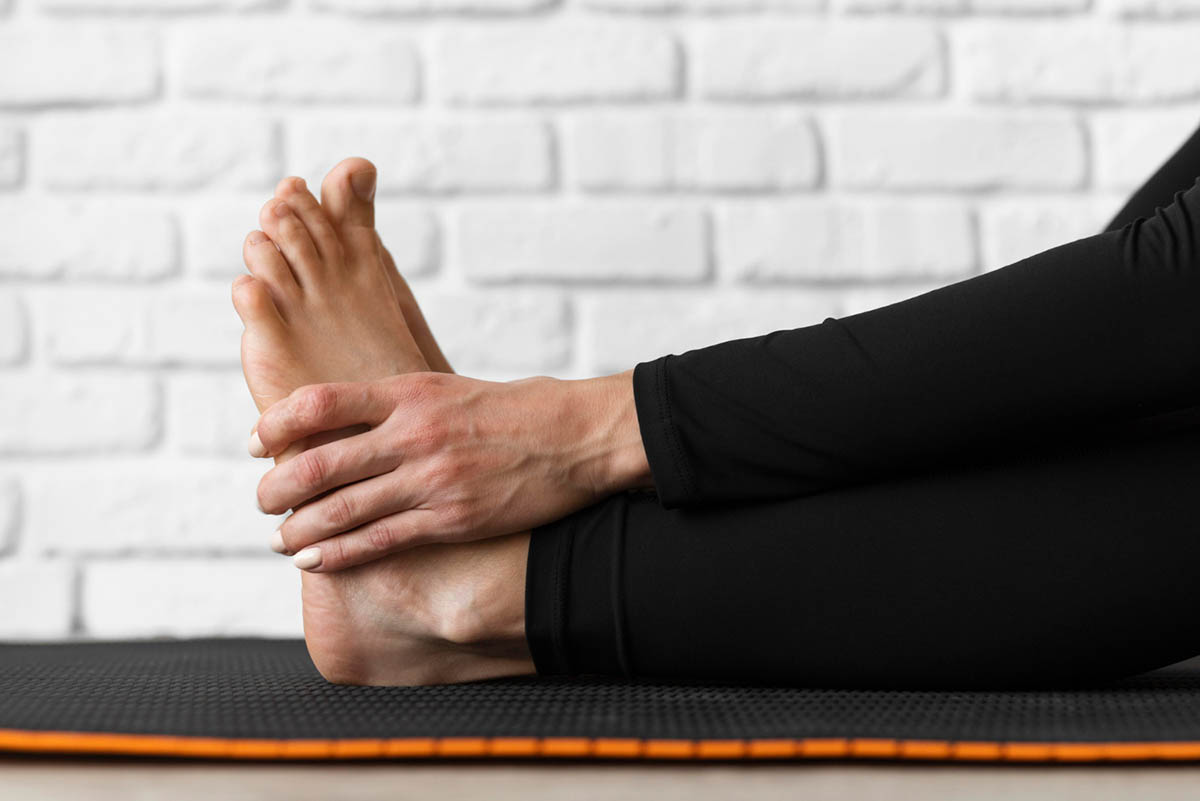Plantar fasciitis is a common foot condition and the most prevalent cause of plantar heel pain. It affects more than three million people every year, making it the leading cause of heel pain. This condition is often characterized by a sharp, stabbing pain in the heel, especially noticeable with the first steps in the morning. It affects more than three million people every year, making it the leading cause of heel pain. Despite the high prevalence of plantar fasciitis, many individuals do not receive the physical therapy they need to manage the condition effectively. This study shows that despite strong evidence of the benefits of physical therapy for plantar fasciitis, very few patients were given this treatment. If you have foot pain symptoms, evidence suggests that physical therapy will help you recover faster and cost you less than if you do not receive this treatment. Research indicates that physical therapy can be an effective treatment for plantar fasciitis, helping patients recover faster and reduce overall treatment costs. This article will explore six of the best physical therapy exercises and taping techniques for plantar fasciitis to help alleviate plantar heel pain and improve foot mobility.
What is Plantar Fasciitis?
Plantar fasciitis is a common condition characterized by inflammation of the plantar fascia, a thick band of tissue that runs across the plantar aspect of the foot and connects the heel bone to the toes. This tissue acts as a shock absorber, supporting the longitudinal arch of the foot. Over time, too much pressure on the plantar fascia can cause small tears, leading to inflammation and heel pain. Biomechanical factors such as foot stress or abnormal weight distribution can exacerbate the condition.
Risk Factors for Plantar Fasciitis
Several factors can heighten the likelihood of developing plantar fasciitis. Age plays a significant role, as the condition is most prevalent in individuals aged 40 to 60. Variations in foot mechanics, such as having a foot flat or a high arch, can exert extra strain on the plantar fascial tissues. You may also develop plantar fasciitis as an overuse injury from running. Additionally, obesity contributes to the condition by increasing body weight on the feet, which can exacerbate foot injuries. Certain occupational hazards, particularly jobs that involve prolonged weight bearing or walking on hard surfaces, also elevate the risk. Lastly, engaging in high-impact physical activities, such as running without suitable footwear, can predispose individuals to plantar fasciitis.
Do Physical Therapy Exercises Work for Plantar Fasciitis?

Yes, physical therapy exercises are highly effective in managing and alleviating the symptoms of plantar fasciitis. These exercises focus on stretching for plantar fasciitis, targeting the central band, lateral band, Achilles tendon, and calf muscles to reduce tension and improve flexibility. Foot intrinsic and foot muscle training exercises are also beneficial, as they can help support the foot arch and prevent further injury. Consistently performing these exercises as part of a plantar fasciitis physical therapy treatment plan can lead to a significant reduction in plantar fasciitis pain and an improvement in function.
6 Physical Therapy Exercises for Plantar Fasciitis
Incorporating a targeted exercise regimen can significantly enhance recovery from plantar fasciitis. Below are six effective plantar fasciitis physical therapy exercises designed to stretch, strengthen, and relieve foot and lower leg tension
Standing Calf Stretch
The standing position calf stretch helps relieve tightness in the calf muscles, which can contribute to strain on the plantar fascia. To perform this exercise, stand facing a wall, place your hands on the wall for support, and step one foot back while keeping the back heel pressed into the ground.
Benefits: The standing calf stretch specifically focuses on the calf muscles and Achilles tendon, promoting flexibility in these areas. This increased flexibility can lead to reduced tension in the plantar fascia, aiding in relieving chronic heel pain and discomfort.
Step-by-Step Instructions:
- Stand facing a wall with your hands placed on it for support.
- Step one foot back, keeping it straight with the heel on the ground.
- Bend your front knee and lean forward slightly, keeping your back leg straight.
- Hold the stretch for 20-30 seconds.
- Switch legs and repeat the stretch.
- Perform this exercise 3 times for each leg.
Toe Towel Scrunches
This exercise helps strengthen the muscles in the ankle complex and improves arch support. Place a towel on the floor, use your toes to scrunch it toward you, and then release.
Benefits: Toe towel scrunches are effective for strengthening the foot’s intrinsic muscles while enhancing support for the plantar fascia. This exercise promotes better control and stability in the metatarsophalangeal joints, which can alleviate discomfort associated with plantar fasciitis.
Step-by-Step Instructions:
- Sit on a chair with a small towel laid out on the floor in front of you.
- Place your foot on the towel with your toes at the edge.
- Use your toes to scrunch the towel towards you, pulling it closer with each scrunch.
- Once the towel is fully scrunched, relax your toes and repeat the exercise.
- Perform three sets of 10 scrunches for each foot.
Plantar Fascia Massage
Using your hands or a tennis ball, gently apply pressure to the arch of your foot to relieve tension in the plantar fascia. This technique is particularly effective for those with chronic heel pain. This soft-tissue therapy technique can improve circulation and alleviate pain associated with plantar fasciitis.
Benefits: Massaging the plantar fascia helps alleviate pain by breaking down adhesions and reducing inflammation. This technique can also enhance circulation, promoting overall foot health.
Step-by-Step Instructions:
- Sit in a chair and place a small ball under your foot, like a tennis or golf ball.
- Gently roll the ball back and forth along the bottom of your foot, applying pressure as needed.
- Focus on areas that feel tight or sore.
- Continue massaging for 2-3 minutes per foot.
- Perform this massage 2-3 times daily, especially after stretching exercises.
Heel Raise
Heel raises strengthen the calf muscles and support the plantar fascia by improving overall foot stability. This exercise is crucial in the treatment of plantar fasciitis and can lead to a significant reduction in pain. To perform this exercise, stand on the edge of a step with your heels hanging off, and slowly rise onto your toes, then lower your heels below the step level.
Benefits: Heel raises enhance joint mobilization techniques, strengthen the calf muscles and Achilles tendon, and offer improved foot support. This exercise helps diminish stress on the plantar fascia, contributing to pain relief.
Step-by-Step Instructions:
- Stand with your feet shoulder-width apart, holding onto a wall or chair for balance.
- Slowly rise onto the balls of your feet, lifting your heels off the ground.
- Hold the position for 2-3 seconds, then slowly lower your heels.
- Perform three sets of 10-15 repetitions.
Towel Stretch
Benefits: The towel stretch enhances flexibility in the plantar fascia and calf muscles, which can help alleviate morning heel pain.
Step-by-Step Instructions:
- Sit on the floor with your legs extended straight in front of you.
- Place a towel around the ball of your foot, holding the ends in each hand.
- Gently pull the towel towards you while keeping your knee straight, feeling a stretch along the bottom of your foot and calf.
- Hold the stretch for 20-30 seconds.
- Repeat the stretch three times for each foot.
Toe Extension
Toe extensions help improve the flexibility and strength of the toe muscles, which can relieve strain on the plantar fascia. To perform this exercise, sit comfortably in a seated position and use your fingers to gently pull your toes back towards your shin, holding the position for several seconds.
Benefits: Toe extensions effectively stretch the plantar fascia while simultaneously strengthening the small muscles of the foot. This exercise encourages improved foot mechanics, reducing strain on the plantar fascia.
Step-by-Step Instructions:
- Sit on a chair and cross one leg over the other.
- Hold your toes with one hand and gently pull them back towards your shin until you feel a stretch in the arch of your foot.
- Hold the stretch for 15-30 seconds.
- Release and repeat 2-3 times.
- Switch to the other foot and repeat the exercise.
Tips for Managing Plantar Fasciitis

To effectively manage plantar fasciitis, it’s essential to adopt several strategies. Begin by wearing supportive footwear that offers ample arch support and cushioning to mitigate stress on the plantar fascia. Consider utilizing shoe inserts or foot orthoses, whether custom-made or over-the-counter, for additional support and pain relief. Using a night splint can also help by providing a constant stretch to the plantar fascia during sleep. Make sure to rest your injured foot and apply a frozen water bottle after physical activities to help reduce inflammation and discomfort. Limit high-impact activities that place strain on your feet, such as running on hard surfaces. Lastly, maintaining a healthy body mass can significantly decrease the pressure on your feet, reducing the risk of developing plantar fasciitis.
When to Seek Medical Help
While physical therapy exercises are often beneficial for managing plantar fasciitis, how long is physical therapy for plantar fasciitis? It’s important to know when to consult a healthcare provider. You should seek help from a healthcare professional if the pain continues even after regular exercise and self-care measures, or if you develop new foot symptoms such as plantar fascia rupture, if you experience significant discomfort that disrupts your daily life, if you notice swelling or redness in your heel or foot, or if you start developing pain in other parts of your foot or leg.
Conclusion
Plantar fasciitis can be painful and debilitating, but with the right physical therapy exercises provided by Vitality Tulsa, you can manage your symptoms and return to your daily activities, potentially avoiding invasive treatments. Suppose you experience recalcitrant plantar fasciitis or symptomatic patients who do not respond to conservative treatments. In that case, your healthcare provider may recommend other therapies, such as platelet-rich plasma or extracorporeal shockwave therapy. For those struggling with excess body weight or obesity, weight loss can be an essential part of managing and reducing foot pain, along with other medical treatments. Overall, adopting a comprehensive treatment plan, which includes both physical therapy interventions and lifestyle modifications, is crucial for effective recovery from plantar fasciitis.
FAQs
Can physical therapy cure plantar fasciitis?
Physical therapy can significantly reduce pain scores and improve function in patients with plantar heel pain, but it may not completely cure the condition. In some cases, the effects of shockwave therapy or other advanced therapies might be considered for more resistant cases. However, with consistent exercise and proper care, many individuals experience long-term relief.
What exercises can I do to walk with plantar fasciitis?
Alongside the exercises mentioned earlier, you might also try balance exercises, arch stretches, and gentle foot stretches as part of your warm-up routine. These movements can help prepare your muscles and alleviate discomfort before walking.
How many times a day should you do plantar fasciitis exercises?
To achieve optimal results, try to complete these exercises 2-3 times per day. It’s particularly beneficial to do them in the morning and just before going to bed.

